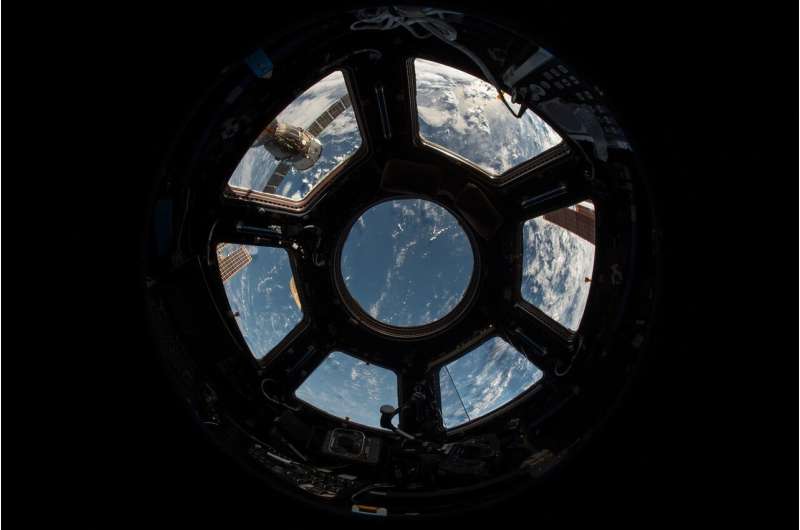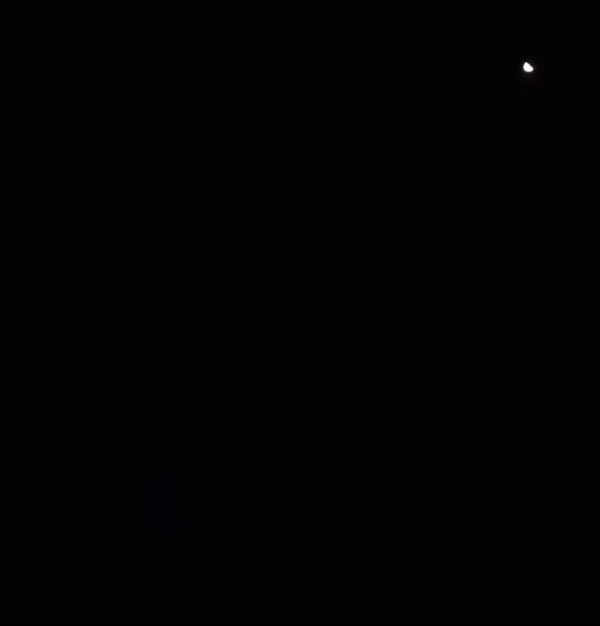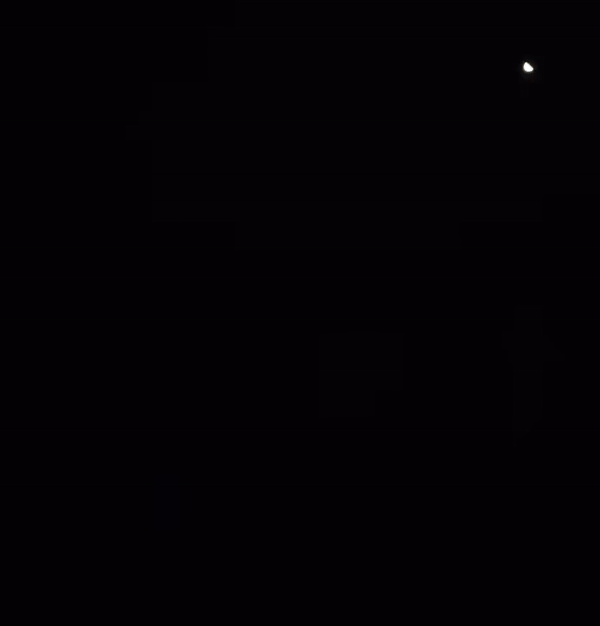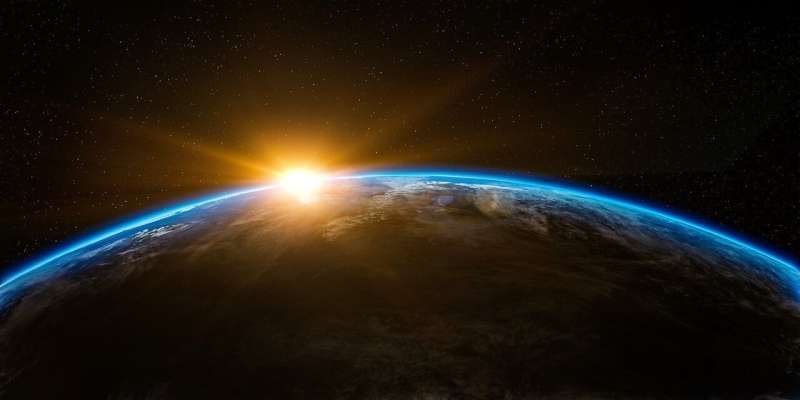Let's Drill: Sols 3742-3743
Tuesday, 14 February 2023 02:45 Currently we are drilling the Dinira target! The scientists and engineers have been closely working together to adjust the drilling strategy to give us the best shot of a successful drill while also managing the wear and tear on our hardware. There is no guarantee it will work as Mars always loves to throw us curveballs, but we're giving it our best! It is also cloud season on Mars, so in additi
Currently we are drilling the Dinira target! The scientists and engineers have been closely working together to adjust the drilling strategy to give us the best shot of a successful drill while also managing the wear and tear on our hardware. There is no guarantee it will work as Mars always loves to throw us curveballs, but we're giving it our best! It is also cloud season on Mars, so in additi Kigen and Skylo work together to bring eSIM and satellite connectivity to expand the potential of 5G IoT
Tuesday, 14 February 2023 02:45 Kigen, a global security leader in IoT enablement with its SIM, eSIM, and iSIM technology solutions, and Skylo, a Satellite Network or Non-Terrestrial Network (NTN) operator focused on connecting anything, anywhere, are together making satellite connectivity integration frictionless for device makers, allowing for seamless transitions between cellular and satellite connectivity via Skylo's SIM p
Kigen, a global security leader in IoT enablement with its SIM, eSIM, and iSIM technology solutions, and Skylo, a Satellite Network or Non-Terrestrial Network (NTN) operator focused on connecting anything, anywhere, are together making satellite connectivity integration frictionless for device makers, allowing for seamless transitions between cellular and satellite connectivity via Skylo's SIM p Kacific and partners expand satellite connectivity in Southeast Asia and other regions
Tuesday, 14 February 2023 02:45 Kacific Broadband Satellites Group (Kacific) and ST Engineering iDirect have reaffirmed their long-term technology partnership through deep cooperation on the ground systems infrastructure for Kacific's fleet of satellites.
ST Engineering iDirect, whose Dialog hub platform was instrumental to Kacific1's highly successful program, will provide a comprehensive next-generation ground infrastr
Kacific Broadband Satellites Group (Kacific) and ST Engineering iDirect have reaffirmed their long-term technology partnership through deep cooperation on the ground systems infrastructure for Kacific's fleet of satellites.
ST Engineering iDirect, whose Dialog hub platform was instrumental to Kacific1's highly successful program, will provide a comprehensive next-generation ground infrastr SpaceX launches 55 Starlink satellites early Sunday morning
Tuesday, 14 February 2023 02:45 The 229-foot-tall (70-meter) Falcon 9 rocket thundered off from Space Launch Complex 40 at Cape Canaveral Space Force Station, Florida, at 12:10:10 a.m. EST (0510:10 GMT) on Sunday, despite the weather.
SpaceX's Starlink Group mission 5-4 launched 55 Starlink satellites onboard the Falcon 9. This is the fourth launch into a new orbital shell for SpaceX's second-generation Starlink constell
The 229-foot-tall (70-meter) Falcon 9 rocket thundered off from Space Launch Complex 40 at Cape Canaveral Space Force Station, Florida, at 12:10:10 a.m. EST (0510:10 GMT) on Sunday, despite the weather.
SpaceX's Starlink Group mission 5-4 launched 55 Starlink satellites onboard the Falcon 9. This is the fourth launch into a new orbital shell for SpaceX's second-generation Starlink constell Large number of launches planned
Tuesday, 14 February 2023 02:45 China plans to carry out more than 70 launch missions this year, according to the nation's major space contractors.
China Aerospace Science and Technology Corp, the nation's dominant space enterprise, has more than 60 launch missions planned for this year, and it aims to deploy more than 200 spacecraft in orbit, according to the Blue Book of China Aerospace Science and Technology Activitie
China plans to carry out more than 70 launch missions this year, according to the nation's major space contractors.
China Aerospace Science and Technology Corp, the nation's dominant space enterprise, has more than 60 launch missions planned for this year, and it aims to deploy more than 200 spacecraft in orbit, according to the Blue Book of China Aerospace Science and Technology Activitie Noise complaints help bring down launch startup SpaceRyde
Monday, 13 February 2023 22:14
Canadian launch startup SpaceRyde has filed for bankruptcy just months after noise complaints put an end to rocket engine tests.
New spacecraft can see into the permanently shadowed craters on the moon
Monday, 13 February 2023 21:11
Shackleton Crater at the lunar south pole is one of the locations on NASA's shortlist for human exploration with the future Artemis missions. But because craters at the lunar poles—like Shackleton—at have areas that are perpetually in shadow, known as permanently shadowed regions (PSRs), we don't know for sure what lies inside the interior. However, a new spacecraft with a specialized instrument is about to change all that.
Russia delays launch to space station while leak is probed
Monday, 13 February 2023 18:20
Russia will postpone the launch of an empty space capsule to the International Space Station pending further investigation of a coolant leak on a supply ship docked to the station, the second such leak at a docked Russian craft in two months, the head of Russia's space corporation Roscosmos said Monday.
The Soyuz capsule was to be launched in automatic mode on Feb. 20 and dock with the orbiting outpost two days later, to serve as a lifeboat for crew evacuation in case of an emergency. Roscosmos director Yuri Borisov said the launch will be delayed, at most until early March.
A Soyuz capsule that can accommodate an astronaut capsule and was already docked to the station developed a coolant leak in December.
Russians Sergey Prokopyev and Dmitri Petelin and NASA astronaut Frank Rubio were supposed to return to Earth in March in that capsule, but Russian space officials said higher temperatures from the coolant leak could make that dangerous.
Then another coolant leak was detected Saturday in a docked supply ship. The leak was detected after a second supply ship docked with the space station.
Russia postpones launch of rescue ship to space station
Monday, 13 February 2023 17:29
Russia said Monday it had delayed the launch of a rescue ship supposed to bring home three astronauts whose planned return vehicle was damaged by a tiny meteoroid.
The mission's postponement until March came after the Russian space agency reported a new problem at the weekend, saying a supply ship docked at the International Space Station (ISS) had leaked coolant.
"A decision has been taken to postpone the launch of the Soyuz MS-23 spacecraft in an unmanned mode until March 2023," the Russian space agency said.
"We stress that nothing threatens the life and health of the crew," it added.
Russia had said in early January it would send an empty spacecraft to the ISS on February 20 to bring back the three astronauts.
MS-22 flew Russian cosmonauts Dmitry Petelin and Sergei Prokopyev and NASA astronaut Frank Rubio to the ISS in September after taking off from the Russian-operated Baikonur Cosmodrome in Kazakhstan.
They were scheduled to return home in the same spacecraft in March.
But MS-22 began leaking coolant in mid-December after being hit by what US and Russian space officials believe was a tiny space rock.
Seventh shooting star ever spotted before strike
Monday, 13 February 2023 16:00 Image:
Image:
For the seventh time, a small asteroid – a meteoroid as astronomers call it – was discovered in space as it raced towards Earth for impact. The predicted time and location of the impact (02:50 - 03:03 UTC, above northern France) were made possible with observations by European astronomer Krisztián Sárneczky using the 60 cm Schmidt telescope from the Piszkéstető Observatory in Hungary. 2023 CX1 is the second impactor discovered by Krisztián, after the impact of 2022 EB5 less than a year ago.
The last three predicted impacts have
Seventh shooting star ever spotted before it struck
Monday, 13 February 2023 16:00 Image:
Image:
For the seventh time, a small asteroid – a meteoroid as astronomers call it – was discovered in space as it raced towards Earth for impact. The predicted time and location of the impact (02:50 - 03:03 UTC, above northern France) were made possible with observations by European astronomer Krisztián Sárneczky using the 60 cm Schmidt telescope from the Piszkéstető Observatory in Hungary. 2023 CX1 is the second impactor discovered by Krisztián, after the impact of 2022 EB5 less than a year ago.
The last three predicted impacts have
World’s first space platforms utilising H2O2 in concentration above 98% – next level of green space propulsion
Monday, 13 February 2023 14:53
Polish leading R&D aerospace entity: Łukasiewicz – Institute of Aviation (Łukasiewicz – ILOT) concludes 2022 with major advances in its strategic area of green space propulsion and sets off with announcing ambitious plans for 2023 and further technology developments.
NASA's Lucy asteroid target gets a name
Monday, 13 February 2023 13:48
Saudi Arabia to send its first woman into space
Monday, 13 February 2023 13:22
Saudi Arabia will send its first ever woman astronaut on a space mission later this year, state media has reported, in the latest move to revamp the kingdom's ultra-conservative image.
Rayyana Barnawi will join fellow Saudi male astronaut Ali Al-Qarni on a mission to the International Space Station (ISS) "during the second quarter of 2023", the official Saudi Press Agency said on Sunday.
The astronauts "will join the crew of the AX-2 space mission" and the space flight will "launch from the USA", the agency said.
The oil-rich country will be following in the footsteps of the neighbouring United Arab Emirates which in 2019 became the first Arab country to send one of its citizens into space.
At the time, astronaut Hazzaa al-Mansoori spent eight days on the ISS. Another fellow Emirati, Sultan al-Neyadi, will also make a voyage later this month.
Nicknamed the "Sultan of Space", 41-year-old Neyadi will become the first Arab astronaut to spend six months in space when he blasts off for the ISS aboard a SpaceX Falcon 9 rocket.
Gulf monarchies have been seeking to diversify their energy-reliant economies through a plethora of projects.
Saudi astronauts selected for Axiom private astronaut mission
Monday, 13 February 2023 13:01
The government of Saudi Arabia has announced the two astronauts who will fly to the International Space Station this spring on a private astronaut mission by Axiom Space.

